Gokhan Yurdakul
Does Twinning Vehicular Networks Enhance Their Performance in Dense Areas?
Feb 16, 2024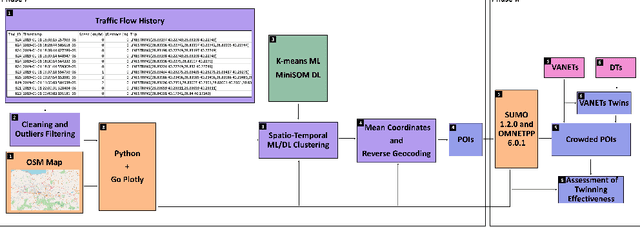
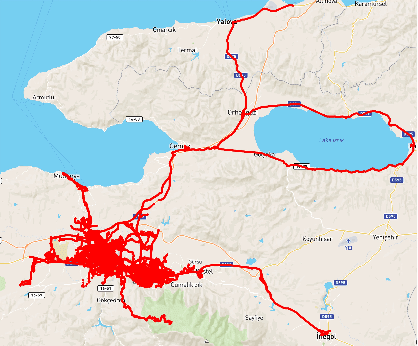
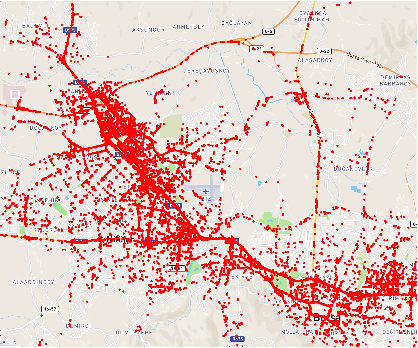
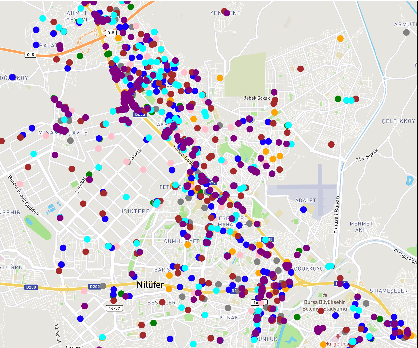
Abstract:This paper investigates the potential of Digital Twins (DTs) to enhance network performance in densely populated urban areas, specifically focusing on vehicular networks. The study comprises two phases. In Phase I, we utilize traffic data and AI clustering to identify critical locations, particularly in crowded urban areas with high accident rates. In Phase II, we evaluate the advantages of twinning vehicular networks through three deployment scenarios: edge-based twin, cloud-based twin, and hybrid-based twin. Our analysis demonstrates that twinning significantly reduces network delays, with virtual twins outperforming physical networks. Virtual twins maintain low delays even with increased vehicle density, such as 15.05 seconds for 300 vehicles. Moreover, they exhibit faster computational speeds, with cloud-based twins being 1.7 times faster than edge twins in certain scenarios. These findings provide insights for efficient vehicular communication and underscore the potential of virtual twins in enhancing vehicular networks in crowded areas while emphasizing the importance of considering real-world factors when making deployment decisions.
Digital Twin-Native AI-Driven Service Architecture for Industrial Networks
Nov 24, 2023
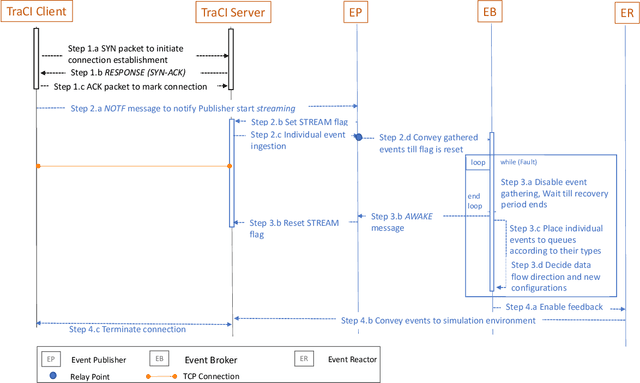
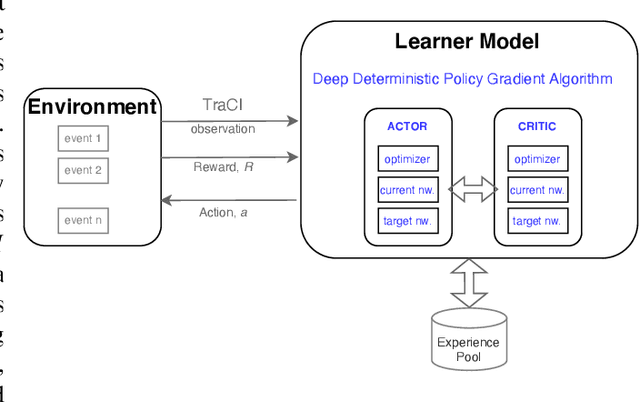
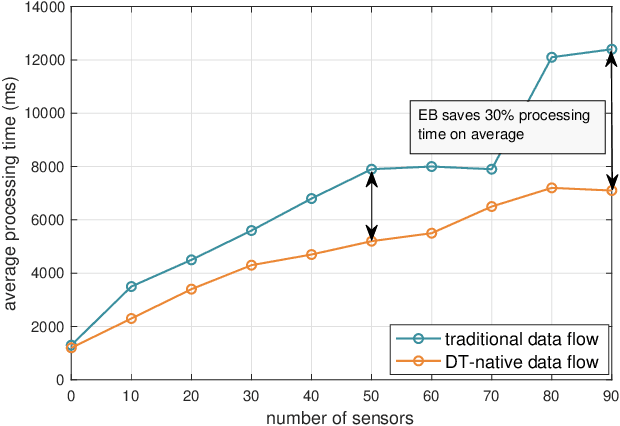
Abstract:The dramatic increase in the connectivity demand results in an excessive amount of Internet of Things (IoT) sensors. To meet the management needs of these large-scale networks, such as accurate monitoring and learning capabilities, Digital Twin (DT) is the key enabler. However, current attempts regarding DT implementations remain insufficient due to the perpetual connectivity requirements of IoT networks. Furthermore, the sensor data streaming in IoT networks cause higher processing time than traditional methods. In addition to these, the current intelligent mechanisms cannot perform well due to the spatiotemporal changes in the implemented IoT network scenario. To handle these challenges, we propose a DT-native AI-driven service architecture in support of the concept of IoT networks. Within the proposed DT-native architecture, we implement a TCP-based data flow pipeline and a Reinforcement Learning (RL)-based learner model. We apply the proposed architecture to one of the broad concepts of IoT networks, the Internet of Vehicles (IoV). We measure the efficiency of our proposed architecture and note ~30% processing time-saving thanks to the TCP-based data flow pipeline. Moreover, we test the performance of the learner model by applying several learning rate combinations for actor and critic networks and highlight the most successive model.
Digital Twin-Empowered Smart Attack Detection System for 6G Edge of Things Networks
Oct 05, 2023Abstract:As global Internet of Things (IoT) devices connectivity surges, a significant portion gravitates towards the Edge of Things (EoT) network. This shift prompts businesses to deploy infrastructure closer to end-users, enhancing accessibility. However, the growing EoT network expands the attack surface, necessitating robust and proactive security measures. Traditional solutions fall short against dynamic EoT threats, highlighting the need for proactive and intelligent systems. We introduce a digital twin-empowered smart attack detection system for 6G EoT networks. Leveraging digital twin and edge computing, it monitors and simulates physical assets in real time, enhancing security. An online learning module in the proposed system optimizes the network performance. Our system excels in proactive threat detection, ensuring 6G EoT network security. The performance evaluations demonstrate its effectiveness, robustness, and adaptability using real datasets.
 Add to Chrome
Add to Chrome Add to Firefox
Add to Firefox Add to Edge
Add to Edge